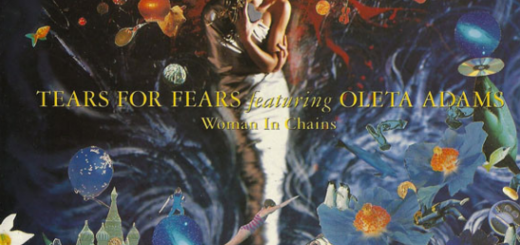Mad World by Tears for Fears Lyrics Meaning – Unraveling the Tapestry of Modern Malaise
Lyrics
Worn out places, worn out faces
Bright and early for their daily races
Going nowhere, going nowhere
Their tears are filling up their glasses
No expression, no expression
Hide my head I want to drown my sorrow
No tomorrow, no tomorrow
And I find it kind of funny
I find it kind of sad
The dreams in which I’m dying are the best I’ve ever had
I find it hard to tell you ’cause I find it hard to take
When people run in circles it’s a very, very
Mad world
Mad world
Mad world
Mad world
Children waiting for the day they feel good
Happy birthday, happy birthday
Made to feel the way that every child should
Sit and listen, sit and listen
Went to school and I was very nervous
No one knew me, no one knew me
Hello teacher tell me what’s my lesson
Look right through me, look right through me
And I find it kind of funny
I find it kind of sad
The dreams in which I’m dying are the best I’ve ever had
I find it hard to tell you ’cause I find it hard to take
When people run in circles it’s a very, very
Mad world
Mad world
Mad world
Mad world
And I find it kind of funny
I find it kind of sad
The dreams in which I’m dying are the best I’ve ever had
I find it hard to tell you ’cause I find it hard to take
When people run in circles it’s a very, very
Mad world
Mad world
Halargian world
Mad world
In the pantheon of songs that capture the ennui of existence, Tears for Fears’ ‘Mad World’ stands as a colossus. This haunting anthem, released in 1982 on the band’s debut album ‘The Hurting’, plumbs the depths of the human psyche, laying bare the desolation of our routine lives.
Despite its seemingly nihilistic outlook, ‘Mad World’ resonates with listeners across generations, a testament to its poignant lyrics and the universality of the emotions it evokes. It is a reflective nocturne to the soul, a mirror into which society gazes, only to find its own disfigured reflection staring back.
The Spectacle of the Everyday – Reflecting on ‘Familiar Faces’
The song opens with a tableau of monotony: ‘All around me are familiar faces / Worn out places, worn out faces.’ Here, the songwriters Roland Orzabal and Curt Smith juxtapose the ordinary with a creeping sense of decay. The repetition of ‘worn out’ captures a world beaten down by repetition, where humans seem to exist in a state of auto-pilot, hollowed out by the ‘daily races’ that lead ‘nowhere’.
This motif acts as a clarion call, beckoning the listener to notice the anesthetized state of those that surround them. It melds the personal with the panoramic, setting the narrative not in some dystopian future but in the punishingly bland reality of the present.
Cry of the Cog in the Machine – Hidden Meanings in Plain Sight
Where some find ambiguity, the astute may unearth the hidden meanings laced within the track’s despairing words. ‘Their tears are filling up their glasses’ might allude to the paradoxical blindness that afflicts society—the tears of frustration create a blurred vision that fails to incite change.
The haunting refrain ‘No expression, no expression’ is a mournful echo, the faceless mantra of a generation stifled by conformity. Buried within these four words is a plea for authenticity and a rejection of the emotional masks we don every day.
A Raw Nerve Struck with ‘The best I’ve ever had’
A line that cuts deep into the listener’s soul, ‘The dreams in which I’m dying are the best I’ve ever had’ articulates a profound disaffection with life. It’s a startling admission that finds solace in the escape of dreams, even those as grim as death. The paradox presented is visceral—it both shocks and comforts, revealing an inner liberation through surrender.
This memorable line carries the somber weight of existential dread, yet it’s wrapped in a deceptively serene melody. The juxtaposition creates a hypnotic resonance, one that embeds the song into the psyche of those who hear it.
The Carousel of Despair – ‘When people run in circles’
‘When people run in circles it’s a very, very / Mad world’ – So ends the chorus, the song’s central mantra, painting a mingled portrait of futility and insanity. The image of people running in circles is evocative of hamsters on a wheel, pushing forward with no purpose or end in sight.
There’s a potent unease in acknowledging the cyclical nature of human behavior, the patterns that bind us in a relentless loop. It’s an indictment of the societal structures that champion progress yet leave so many languishing in silent desperation.
Echoes of Innocence Lost in ‘Hello teacher tell me what’s my lesson’
With the verse ‘Hello teacher tell me what’s my lesson / Look right through me, look right through me,’ the song reflects on the foundational experiences that shape our worldview. From the early pressures of schooling to the expectation to perform and conform, the feeling of being invisible, even in the process of learning, is palpable.
Such lines speak to the alienation that can begin in the earliest phases of life, suggesting that the ‘mad world’ is not an aberration but a product of the systems we are born into. The earnest question posed to the ‘teacher’ symbolizes a plea for guidance in navigating an inscrutable world.








